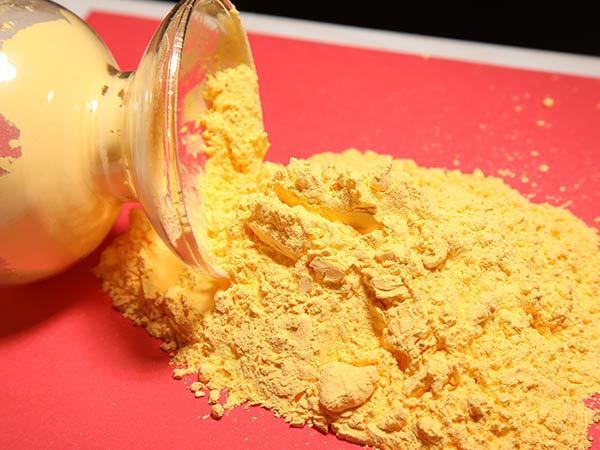language
English
العربية
বাংলাদেশ
Български
Hrvatski
Česky
Dansk
Nederland
 Esperanto
Esperanto
Slovenski
Filipino
Suomi
Français
Maori
 Shqiptare
Shqiptare
Georgian
 Euskara
Euskara
Deutsch
Ελλάδα
ישראל
इंडिया
Magyarország
Ísland
Indonesia
Irlanda
Italia
日本語
Sovensko
Հայաստան
한국
Kyrgyz
ປະເທດລາວ
 Zulu
Zulu
Latvian
Lithuanian
Luxembourgish
 Latinus
Latinus
Macedonian
Малайская
Maltese
Монгол улс
 Cymraeg
Cymraeg
ဗမာ
 தமிழ்
தமிழ்
नेपाल
Norge
ایران
Polska
Portugal
România
Российская
Србија
 Slovak
Slovak
Србија
 Slovak
Slovak
Bosanski
Slovenian
Беларус
España
Sverige
Точик
ประเทศไทย
Türk
Azərbaycan
Uzbek
 Afrikaans
Afrikaans
Việt Nam
Maximizing Efficiency in PVC Foam Profile Production with NC Foaming Agent
Release time: 2025-01-20
Maximizing Efficiency in PVC Foam Profile Production with NC Foaming Agent
Table of Contents
- Introduction to PVC Foam Profile Production
- Understanding NC Foaming Agents
- Benefits of NC Foaming Agents in PVC Production
- Optimizing the Production Process with NC Foaming Agents
- Application Techniques for NC Foaming Agents
- Quality Control Measures in PVC Foam Production
- Case Studies: Success Stories
- Frequently Asked Questions
- Conclusion
Introduction to PVC Foam Profile Production
PVC (Polyvinyl Chloride) foam profiles have a wide range of applications, from construction materials to automotive parts. Their lightweight nature combined with impressive durability makes them ideal for numerous industries. However, achieving optimal efficiency in the production of PVC foam profiles can be challenging. With the advent of NC (Nucleating and Cell-formation) foaming agents, manufacturers can significantly enhance their processes, leading to higher output and improved product quality.
In this article, we will explore the intricacies of PVC foam profile production, focusing on the role of NC foaming agents. We will delve into their benefits, application techniques, and how they can streamline manufacturing processes to maximize efficiency.
Understanding NC Foaming Agents
NC foaming agents are specialized additives designed to facilitate the foaming process in thermoplastic materials. They work by creating a network of gas cells within the PVC matrix, resulting in a lightweight foam with excellent mechanical properties.
These agents are distinguished by their ability to generate a fine and uniform cell structure, which significantly enhances the insulation properties and surface finish of the foam profiles. Furthermore, NC foaming agents are environmentally friendly and can be tailored to meet specific production requirements.
Key Characteristics of NC Foaming Agents
- **Uniform Cell Structure**: NC foaming agents promote a consistent cell size, contributing to the overall quality of the foam.
- **Temperature Stability**: These agents maintain performance across a range of temperatures, ensuring reliable results in various production environments.
- **Compatibility**: NC foaming agents can be easily integrated with other additives, allowing manufacturers to customize their formulations.
Benefits of NC Foaming Agents in PVC Production
The introduction of NC foaming agents into PVC production processes offers several advantages that can significantly impact productivity and product quality.
1. Improved Thermal Insulation
The fine cell structure created by NC foaming agents enhances the thermal insulation properties of PVC foam profiles. This makes them ideal for applications requiring energy efficiency, such as building materials and refrigeration components.
2. Enhanced Mechanical Properties
NC foaming agents contribute to the overall strength and durability of PVC foam profiles. The uniform cell structure improves tensile strength and impact resistance, ensuring the end product can withstand various stressors.
3. Reduction in Material Usage
By using NC foaming agents, manufacturers can reduce the amount of PVC resin required, lowering costs and minimizing waste. This not only improves profitability but also supports sustainable production practices.
4. Versatility in Applications
The adaptability of NC foaming agents allows them to be utilized across various industries, from automotive to packaging. This versatility opens up new business opportunities for manufacturers.
Optimizing the Production Process with NC Foaming Agents
To fully leverage the advantages of NC foaming agents, manufacturers must optimize their production processes. This can be accomplished through several strategies:
1. Formulation Adjustments
Careful formulation of the PVC blend is crucial. Adjusting the concentration of NC foaming agents can impact the foaming process, ensuring the desired characteristics of the final product are achieved.
2. Control of Processing Conditions
Maintaining optimal processing conditions, such as temperature and pressure, is vital for the effective functioning of NC foaming agents. Manufacturers should invest in advanced monitoring systems to ensure consistency throughout production.
3. Enhanced Mixing Techniques
Utilizing efficient mixing techniques can improve the distribution of the foaming agent within the PVC matrix. This leads to a more homogeneous foam structure and better overall performance.
Application Techniques for NC Foaming Agents
Understanding the best practices for applying NC foaming agents can further enhance production efficacy. Here are some key techniques:
1. Pre-Mixing with Additives
Pre-mixing NC foaming agents with other additives before introducing them to the PVC resin can improve dispersion, ensuring a more uniform foaming process.
2. Utilizing Twin-Screw Extruders
Twin-screw extruders provide excellent mixing and kneading capabilities, which are essential for achieving the desired foam structure. Their design allows for better heat transfer, optimizing the foaming process.
3. Foaming Temperature Management
Careful management of the foaming temperature is essential. Too high a temperature can lead to excessive gas generation, while too low can inhibit foaming. Finding the right balance is key to producing high-quality foam profiles.
Quality Control Measures in PVC Foam Production
Ensuring the quality of PVC foam profiles produced with NC foaming agents requires rigorous quality control measures. Here are several practices that can help maintain high standards:
1. Regular Testing of Foam Properties
Conducting tests on thermal insulation, mechanical strength, and cell structure is essential. This can be achieved through various laboratory techniques that assess the foam's performance against industry standards.
2. Monitoring Production Parameters
It's critical to monitor the production parameters continuously. Keeping track of temperature, pressure, and the concentration of foaming agents can help identify deviations that may affect product quality.
3. Feedback Mechanism
Implementing a feedback mechanism for operators can enhance the production process. Operators should be trained to report any anomalies, ensuring that corrective actions can be taken promptly.
Case Studies: Success Stories
Several manufacturers have successfully integrated NC foaming agents into their production processes, resulting in significant improvements.
Case Study 1: Leading Manufacturer of Building Materials
A leading manufacturer in the building materials industry adopted NC foaming agents to enhance their PVC foam production. By optimizing their formulation and processing techniques, they achieved a 30% reduction in material costs while increasing product durability by 20%.
Case Study 2: Automotive Component Supplier
An automotive component supplier implemented NC foaming agents in their PVC profile production. This resulted in improved insulation properties, leading to enhanced energy efficiency in their products, which garnered positive feedback from clients.
Frequently Asked Questions
1. What are NC foaming agents, and how do they work?
NC foaming agents are additives that create a network of gas cells within the PVC matrix during production. This results in lightweight and durable foam profiles.
2. What are the benefits of using NC foaming agents in PVC production?
Benefits include improved thermal insulation, enhanced mechanical properties, reduced material usage, and versatility in applications.
3. How can I optimize the production process with NC foaming agents?
Optimization can be achieved through formulation adjustments, control of processing conditions, and enhanced mixing techniques.
4. What quality control measures should I implement?
Regular testing of foam properties, monitoring production parameters, and establishing a feedback mechanism for operators are crucial quality control measures.
5. Can NC foaming agents be used in other materials besides PVC?
Yes, NC foaming agents can be utilized in various thermoplastic materials, offering flexibility across different industries.
Conclusion
Maximizing efficiency in PVC foam profile production is achievable with the strategic use of NC foaming agents. These agents not only enhance product quality but also optimize production processes, leading to reduced costs and increased competitiveness. By understanding the characteristics and benefits of NC foaming agents, along with implementing best practices in production and quality control, manufacturers can significantly improve their output and meet the ever-growing demands of the market. As the industry evolves, embracing such innovations will be pivotal for success in the PVC foam profile sector.
 sales@feihengchem.com
sales@feihengchem.com
 +8615665855931
+8615665855931 中文
中文 English
English España
España











